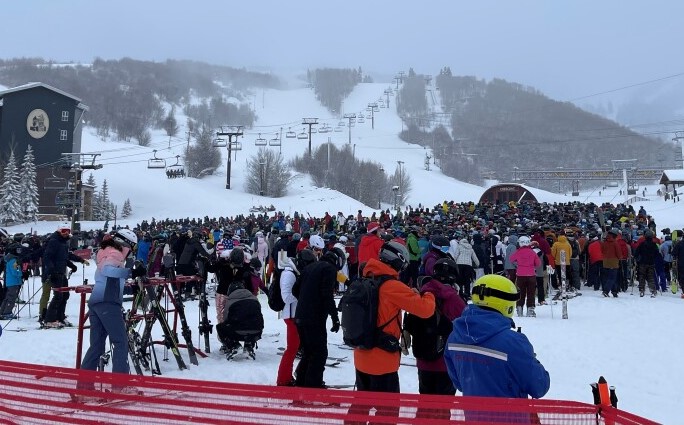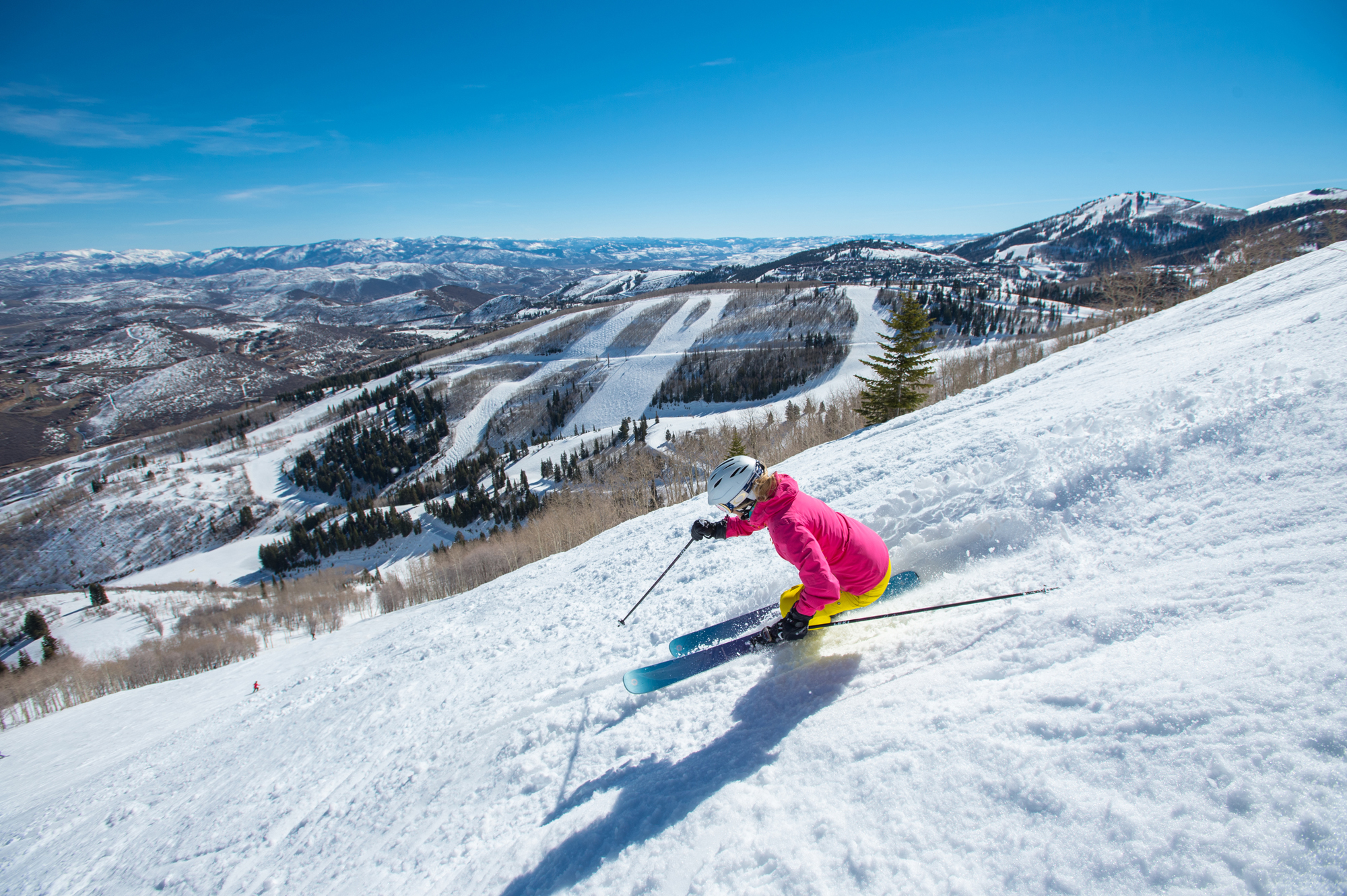
Last season saw a record number of skier visits in the US. This marked the second straight year of record numbers, indicating the demand for outdoor recreation is strong. However, some may wonder if this is a good thing, because although the number of ski resorts in operation also grew, oftentimes visitors had to navigate overcrowded slopes. Many resorts try to manage capacity with dynamic ticket prices, ticket limits, reservations, and blackout dates. But how does a ski area determine what its capacity is?
The number of guests a ski resort can comfortably handle on any given day is called the Comfortable Carrying Capacity (CCC). It is not the maximum capacity, but rather the number of guests where all resort operations are balanced. Put another way, it’s the number of skiers a resort can handle where everyone is having a good time.

For now, the calculation of the CCC is an industry secret. What we know is that it has to do with chairlift capacity. Factors that go into the equation are the vertical feet gained plus the number of skiers the lift can transport uphill in an hour. This is combined with the number of runs and the vertical rise of those runs. It also factors in the amount of time skiers spend in line, in the lodge, on the lift, and the time they spend actually on the snow.
Ski area operators don’t share the math behind the CCC that helps them plan for capacity, claiming the calculation is proprietary. The CCC is fundamental for all design plans for every aspect of a ski area including chairlifts, ski runs, restaurants, and parking lots. Now, due to a district court ruling last week in Park City, Utah, the CCC may be made public.
Why could this be made public?
Vail Resorts, the biggest operator in North America, was recently appealing a Park City Planning Commission decision to reject two lift upgrades at its Park City Mountain Resort. The reason was due to the uncertain math surrounding how the faster chairlifts would impact parking.
Judge Richard Mrazik of Utah’s Third District Court affirmed the planning commission’s ability to scrutinize the CCC math. This could create the opportunity for mountain community leaders to seek more details on ski area traffic data as a requirement for approving new chairlifts, parking lots, and lodges. A more thorough understanding of the CCC would provide more understanding of how to better manage traffic and crowds.

This was a blow to Vail Resorts as no ski area wants its capacity numbers public, especially since on peak days it is not uncommon for resorts to reach 25% to 30% beyond the CCC. Vail Resort’s Epic Pass is popular for a reason, and it sells a lot of them. The more it sells, the more profitable the company is. These and other conglomerate passes have made skiing cheaper and easier for passionate skiers and riders, especially on peak days when walk-up window ticket prices can be exorbitant.
Making the CCC public could cause ski areas to be more active in managing their capacity, potentially turning away guests and revenue with it. Vail can appeal the ruling in a Utah state appellate court, which seems plausible.
Ultimately, this could help keep ski areas accountable to master plan agreements. Ski towns can benefit from more transparency on issues that affect their mountain communities and raise awareness about capacity. It will be interesting to see how this battle plays out for Vail Resorts and the industry as a whole.
